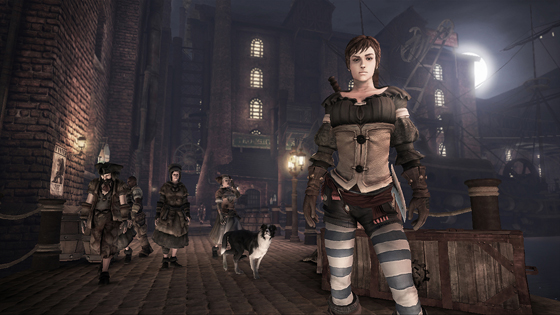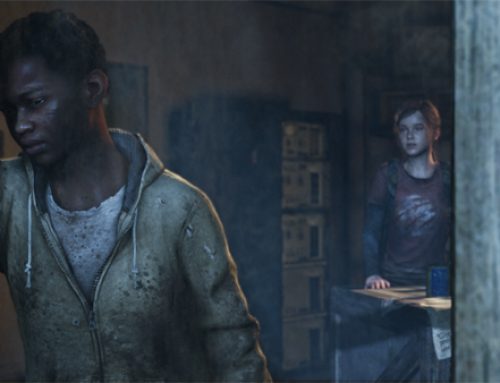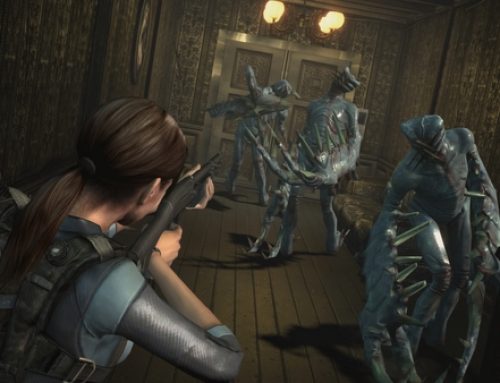
At the start of the game, "Fable III's" Bowerstone Industrial district is a bleak, Dickensian nightmare filled with beggars and child laborers.
It’s easy to picture “Fable III,” a Frankenstein’s Monster of a game if there ever was one, being stitched together in a lab by the gaming equivalent of mad scientists.
One of these collaborators is an old-school game designer who makes swords-and-sorcery adventures like “Diablo II” and “The Elder Scrolls IV: Oblivion.” This scientist excels at creating memorable quests, cool magic spells and powerful weapons.
The scientist creates an epic tale of brotherly betrayal, casting the player as a prince or princess exiled from the castle by his or her brother, King Logan. Tired of Logan’s reign of terror and coterie of corrupt nobles, the hero must rally the kingdom of Albion, overthrow Logan and assume control.
Working with this swords-and-sorcery designer is someone from the social gaming, “FarmVille” end of things. This collaborator specializes in creating low-difficulty gaming experiences that everyone can enjoy, packed with plenty of opportunity for online interaction, whether it’s cooperative play, collaboration or gift-giving.
The second designer skeletonizes the lifeless body created by the swords-and-sorcery guy. He strips out the menu and inventory system — a staple of role-playing games for decades — and replaces it with a Sanctuary, an actual room where players interact with weapons, items and abilities. He grafts on a real-estate system in which players can buy shops and invest in rental properties.
The properties can be spruced up to enhance their value and allow for the charging of higher rent. Part of the rent, in turn, must be plunged back into maintaining the properties, which deteriorate over time and require repairs in the same way “FarmVille” crops require harvesting.
The social game designer takes a look at all the cool weapons created by his collaborator and decides to give each player only some of them. To collect all of “Fable III’s” swords, guns and hammers, players must give gifts and swap through Xbox Live, a process that’s made easy through little orbs that move through the game world and allow interaction with dozens of players in what’s ostensibly a one- or two-player game.
In what might be a first for an online console game, players can even get married to other gamers over Xbox Live, as well as have children or form business partnerships.
“Fable III” (rated M, $60 for Xbox 360, frequently on sale for $40) is a fascinating look at how traditional gaming genres might be democratized by incorporating elements from titles played by people who would never identify themselves as “gamers.”
Albion’s barrier to entry is low for anyone willing to get comfortable with the Xbox 360 controller. As with 2008’s “Fable II,” Lionhead Studios’ latest game is ridiculously easy. The game’s hero can’t die, and it’s quite possible veteran gamers will finish their first playthrough without being knocked out. Combat is as simple as mashing one of three buttons, over and over.
There’s a bit of depth to be found in creating different combos of spells and weapons, but most enemies go down pretty quickly. There’s not much strategy involved beyond trying to figure out when to drink potions that slow enemies, restore your health or summon creatures to fight alongside you.
As in “Fable II,” the sequel features a sparkling path that leads players from one objective to the next, preventing them from becoming lost in Albion’s largest environments. To truly discover everything, players will need to stray from these paths, but anyone should be able to finish the game.
Unlike past “Fable” titles or other similar games, “Fable III” doesn’t end with the player becoming king and living happily ever after. Instead, the hero ascends to the throne a little more than halfway through. The game’s final act requires players to govern effectively and live up to promises made to allies during the run-up to Logan’s ouster, all while preparing for an important, end-game event I won’t spoil here.
Lionhead’s experiment isn’t a full-formed success, capable of putting on a suit and holding down a 9-to-5 job. Nor is it an abomination, destined to be exiled to the basement and never talked about again. Instead, it’s like the monster in “Young Frankenstein,” entertaining and enchanting its audience one moment, then inspiring them to throw vegetables the next.
“Fable III” is capable of bringing great delight, whether it’s through its whimsical, often-hilarious script, stellar voice acting by the likes of John Cleese and Stephen Fry, or mindlessly addictive social features.
But mere minutes after you find yourself giggling at the nerdy gnome collector who takes it to another level by dressing like a gnome, you’ll be entering your sanctuary to mute all online orbs because some 12-year-old kid is following you around the game and singing, preventing you from interacting with anyone.
In the end, Lionhead’s game is quite enjoyable, but not the addictive home run the studio was clearly aiming for. It has a fair number of glitches, such as the aforementioned glowing trail’s knack for occasionally disappearing. And the simplistic quests and linear story will probably appeal more to fans of “FarmVille” than “Fallout” fanatics. (I wanted there to be multiple, good and evil routes to the throne, with variable sets of allies and campaign promises.)
But to anyone interested in game design, it’s a fascinating way to spend a couple dozen hours. The quest to make a role-playing game for everyone is bound to see fruition someday, just not yet.



